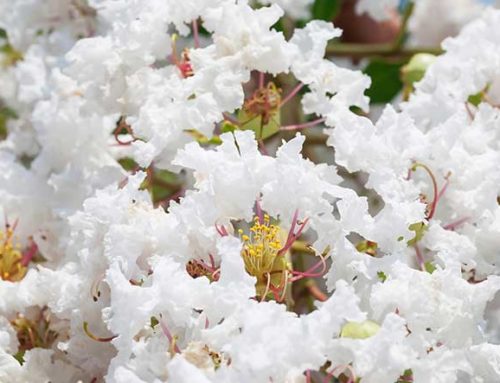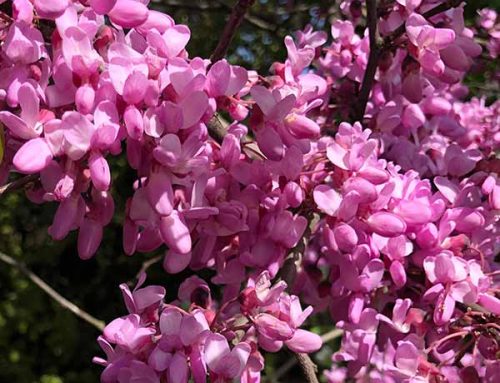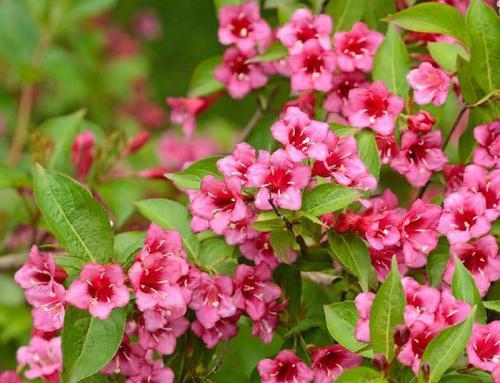Tamarix is a highly decorative deciduous shrub that is best known for its feathery foliage and masses of tiny blossoms. In addition to its ornamental value, this ancient cultivar is also prized for its exceptional resilience.
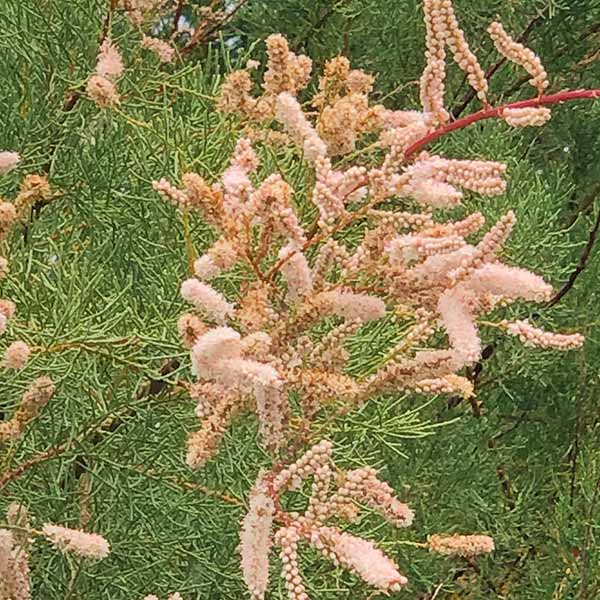
Pink flowering Tamarix – perfect for coastal planting
In the United Kingdom, Tamarix or Salt Cedar, as it is also referred to, is a favourite choice for coastal gardens. While this flowering shrub is a magnificent addition to any landscape, its famed resistance to saline soils and salt sprays makes it an ideal candidate for a seaside garden. Planted en masse, Tamarix can be used as a windbreak, or grown on its own for the outstanding decorative value it offers.
Tamarix Characteristics
The name Tamarix refers to a whole species comprised of evergreen or deciduous shrubs and small trees. The varieties we offer for sale are all attractive deciduous shrubs, with many uses in the garden. After all, with its stunning pink flowers and juniper-like foliage, it is no wonder that the versatile salt cedar is popular in England!
Tamarix has an open, loose growth habit which pairs beautifully with its wispy foliage. The long and slender branches are adorned with grayish-green stiff needles, from early spring to late in the autumn. The young growth is softer and more yellow-green once it first emerges, but as the seasons pass, the foliage hardens and darkens. In autumn, the scale-like leaves turn to a warm, orange hue, adding vibrant colour to the landscape. But, while the appearance and texture of the foliage are undeniably decorative, it is not the whirls of needles that makes Tamarix so loved.
The most noted quality of salt cedar tree is its stunning pink bloom, that appears from May through to September, depending on the particular cultivar. Regardless of the variety, though, Tamarix flowers will persist on the branches from summer to autumn, offering interest for multiple seasons. The masses of tiny, pale pink flowers are borne in clusters, covering every centimetre of the shrub’s stems. The five-petaled blossoms of the Tamarix are often fragranced, as well, attracting beneficial pollinators to your garden.
History and Origin of the Tamarix Tree
The Tamarix has been mentioned in the Ancient Egyptian papyrus scrolls, the Bible, and the Mesopotamian tablets, to name a few so it wold seem this lovely flowering shrub has been appreciated for millennia. The origin of the species can be traced to the Mediterranean region, central Asia and northern China.
The earliest mention of the salt cedar tree comes from Mesopotamia. In the Epic of Gilgamesh, dated to 2100 BC, the hero’s mother, goddess Ninsun, bathes in tamarisk and soapwort – a plant for the gods it would seem! Tamarix has also appeared in the Book of Genesis, multiple times, as well as in the Quran. And that’s not all.
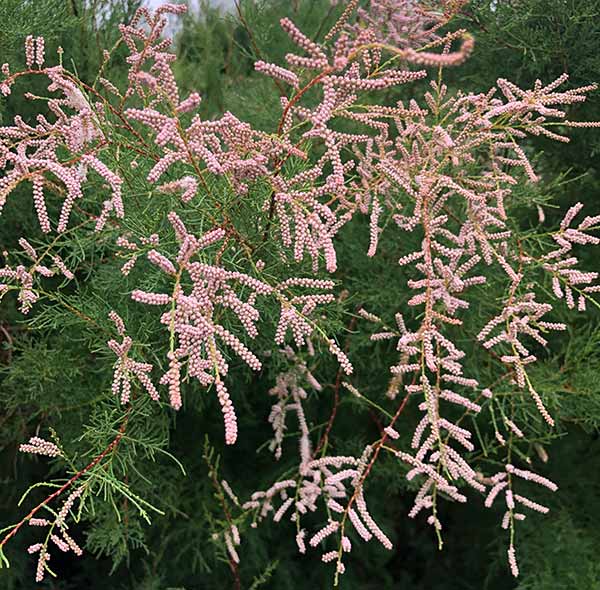
Small flowering Tamarix Parviflora – pretty pink flowers and feathery foliage
The mythology of Ancient Egypt is one of the first to mention the concept of the tree of life, which is closely related to their custom of mummifying aristocrats and nobles. And it all started with a Tamarisk tree! According to the myth about Osiris and the tree of life, the god of the afterlife was tricked into lying in a wooden chest that was then thrown into the Nile. The chest, with Osiris inside it, ended up lodged inside a trunk of a tree. That tree was the Tamarix, which slowly encased the god in its slender branches, becoming the inspiration for the sarcophagus.
Landscape Uses for Salt Cedar
Tamarix can be shaped like a large shrub or a small tree. Either way, this versatile plant will add multiple seasons of interest to your garden, without asking much in return. Salt cedar got its name because these shrubs can thrive in coastal gardens, as saline soils and salt prays do not bother them. Harsh winds also do not pose a problem for these hardy cultivars, so choosing them as a windbreak is a fantastic idea. For instance, planting Tamarix Tetrandra en masse would give your more sensitive plants shelter from the elements, and at the same time help you create a marvellous display of pink blooms.
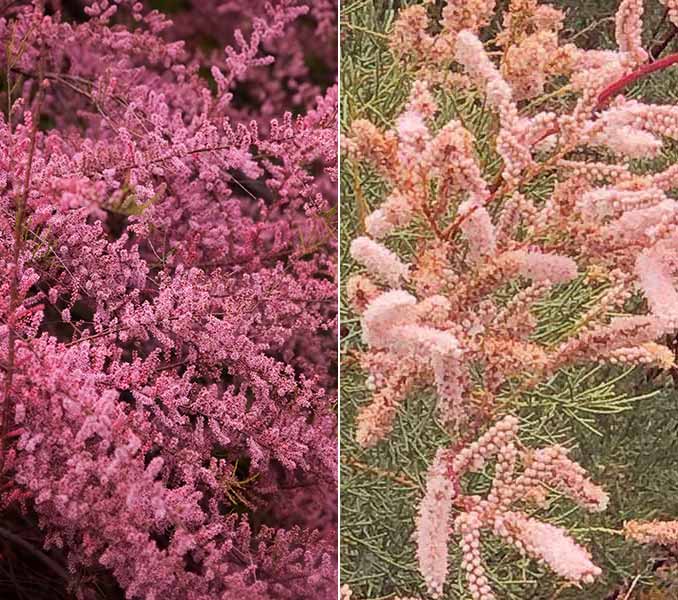
Red and Pink flowering Tamarix
Of course, it is not only the seaside gardens where the resilience of the Tamarix is appreciated. Country gardeners will find that these tough shrubs fit in wonderfully in their green kingdom, as they are deer resistant, as well. To boot, a floriferous variety with an informal growth habit such as Tamarix Parviflora would be a perfect addition to a sunny spot in a woodland garden.
If you are an urban gardener, you will be happy to hear that salt cedar is suited to city gardens, too. These striking shrubs have no issue with pollution and will thrive even in the busiest cities. For instance, Tamarisk Pink Cascade or Red Tamarisk are fully hardy and very eye-catching. Ideal as a focus of interest or to add colour and texture to a mixed shrub border! In addition, you can grow Tamarix in a pot to add interest to your patio, rooftop garden, or balcony. As long as you choose a sunny position, you can count on your cultivar to flourish.
At Paramount Plants & Gardens, we offer established, potted Tamarix plants for sale in various sizes. You can contact us for further information about the plants. All of our plants can be ordered online – we do nationwide delivery!


